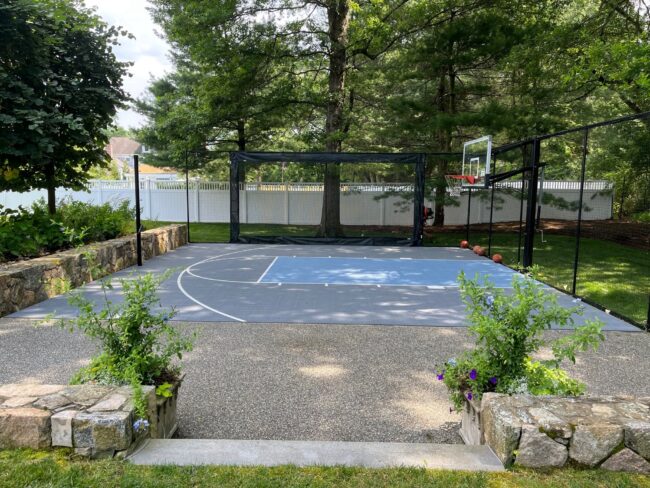The Ultimate Guide to Estate Property Care in Connecticut & Westchester

Is your once picture-perfect estate gradually wearing away? What was once a pristine paradise—lush green lawns, neatly sculpted hedges, and elegant stone pathways—now shows signs of nature slowly reclaiming its space. Weeds have crept in, the grass has faded to a duller hue, and that vibrant flower garden you once cherished is starting to look a little forgotten. Caring for a grand estate takes more than weekend effort—it requires time, dedication, and a green thumb that you might not feel so confident in anymore.
Luckily, this guide is the secret to restoring your estate to its former glory, and keeping it that way. We’ve compiled all of the expert tips, techniques, and strategies needed to breathe life back into your weary landscape. Here, you’ll learn about seasonal landscape maintenance schedules, plant selection secrets, expert irrigation solutions, hardscape preservation tips and tricks and more. This is generations of property care wisdom at your fingertips, all wrapped up into one toolkit just for you. Read on to discover what you’ll need to develop the green thumb your property deserves, or confidently recognize when it’s time to partner with the experts who have what it takes to tackle an estate like yours.
The Living Canvas Approach

Your estate is a compilation of much more than gardens, pathways, and structures, it’s a living and breathing ecosystem. The soil beneath your feet feeds the plants that grow on the property and cleanse the air you breathe in. Water moves through the land in patterns. Trees, shrubs, and flowers shift with the seasons, each responding to the changing climate in their own, unique way.
Instead of viewing estate property care as a chore, think of it as stewardship. When every element works in harmony with the land, your land becomes more than a space to simply maintain. It becomes a landscape that’s evolving, thriving, and reflects the true beauty of your surroundings.
Beauty Meets Function

A well-planned estate should be just as enjoyable to use as it is to admire. Estate property care is about designing outdoor spaces with purpose, where every element contributes to both comfort and ease of movement. Pathways should flow naturally, seating areas should feel inviting, and plantings should enhance the surroundings without requiring excessive upkeep.
Long-term maintenance also plays a key role in thoughtful design. Mulching garden beds helps retain moisture, suppress weeds, and improve soil health, reducing the need for frequent watering and upkeep. Replacing high-maintenance grass with low-maintenance ground covers like creeping thyme or clover can cut down on mowing and irrigation while still maintaining a polished look.
Changing with the Seasons
Winter months mean shorter daylight hours that leave your evergreens bare and ornamental grasses flattened due to lack of sun exposure, while perennials struggle to survive the dormancy periods. Pruning your overgrown trees, repositioning container gardens, or adding shade-loving plants maintain the structure and color of your landscape in the colder months. Come spring, heavy rains means pooling water and plant, compacting soil, and weakening roots. If you’ve noticed a soggy lawn or washed-out pathways, introducing seasonal estate landscape maintenance strategies like adjusting grading, installing French drains, or planting deep-rooted species like river birch can improve drainage issues. It’s this thoughtful approach to estate property care that keeps your landscape maintenance simple and your property looking great all year long.
Essential Lawn Care Tips in Connecticut & Westchester
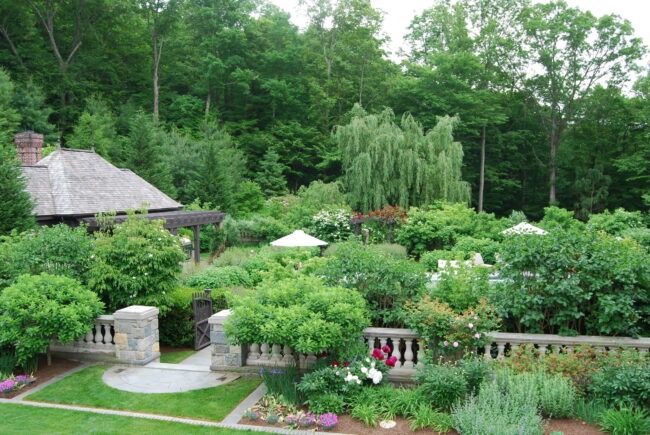
Your lawn is a backdrop to your landscape, making it an incredibly necessary piece to your estate property care plan. Keeping your turf strong requires a focus on precision cutting, deep root development, and proactive care to keep weeds and diseases away. By following these expert lawn maintenance tips, you are giving your lawn what it needs to stay lush and resilient in every season.
Precision Mowing for a Healthier Turf
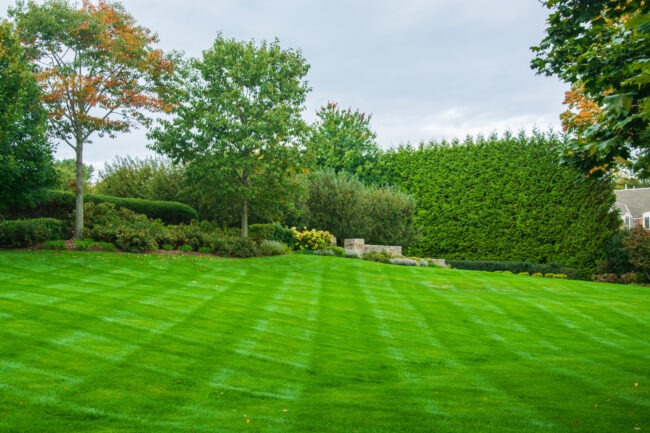
Your mowing technique directly impacts the strength and appearance of your lawn. Keeping mower blades sharp ensures clean cuts that heal quickly, reducing stress and the risk of disease. Adjusting cutting heights throughout the seasons is just as important, taller grass in the summer helps to protect soil from heat stress, and a slightly lower cut in spring and fall encourages dense, uniform growth.
Soil Nutrition Secrets
Your lawn’s long-term health starts below the surface. Soil testing identifies nutrient imbalances, allowing you to apply fertilizers that strengthen turf instead of overstimulating weak growth. Over-fertilization makes your grass grow rapidly, but it becomes fragile during development, making it more susceptible to disease. Following a specific nutrition plan helps to support strong and even growth that lasts.
Weed Prevention
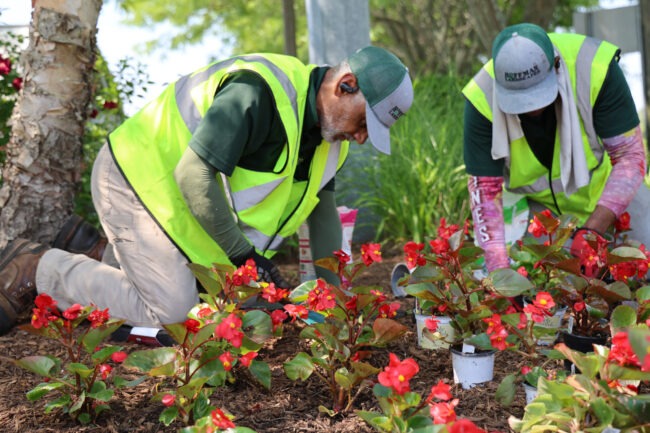
By taking a strategic approach to weed control, you can keep your lawn healthy without the need for excessive treatments. Applying pre-emergent treatments interrupts the growth cycle and stops invasive weeds before they take hold of your space. Herbicides and natural control methods maintain a clean and weed-free lawn, and protect the integrity of your lawn.
Our experts specialize in high-end property care with customized solutions for expansive landscapes, historic properties, and modern estates in both the Connecticut and Westchester regions. Partner with us to bring your property back to life.
Year-Round Estate Maintenance
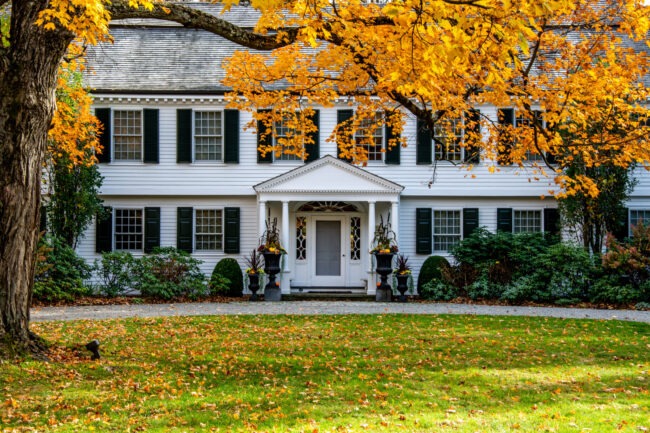
Maintaining an estate means working with the changing seasons, not against them. Each shift in weather brings new opportunities to strengthen your property, from preparing soil in spring to reinforcing plant health in summer. Staying ahead of seasonal maintenance ensures that your landscape remains vibrant, resilient, and ready to withstand the elements year-round. By understanding nature’s cycles, you can take the right steps at the right time, keeping your estate in peak condition with minimal effort.
Spring Renewal Tactics
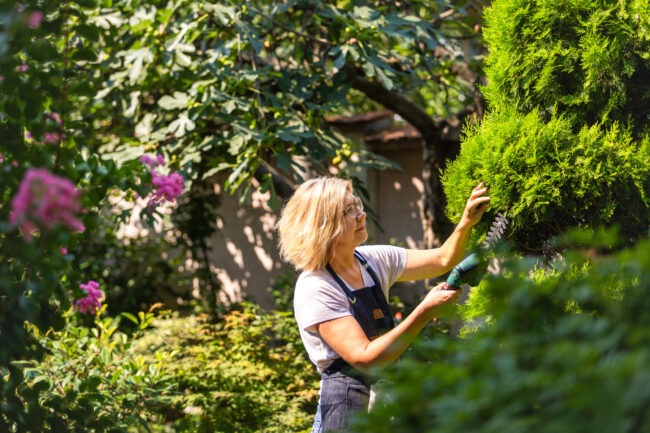
As winter fades, your property is ready for renewal, but a successful transition into spring requires more than just clearing debris. Leftover leaves and fallen branches look untidy and block sunlight from reaching the soil, creating ideal conditions for pests and disease to move in.
Spring is the time for pruning, removing weak or diseased branches, and shaping trees and shrubs for optimal growth. Your lawn needs attention during this time as well, aeration breaks up compacted soil and allows oxygen to reach the roots. Follow this with fertilization and overseeding to help build a thick and resilient lawn that can better withstand the summer heat and humidity.
Summer Strength Strategies
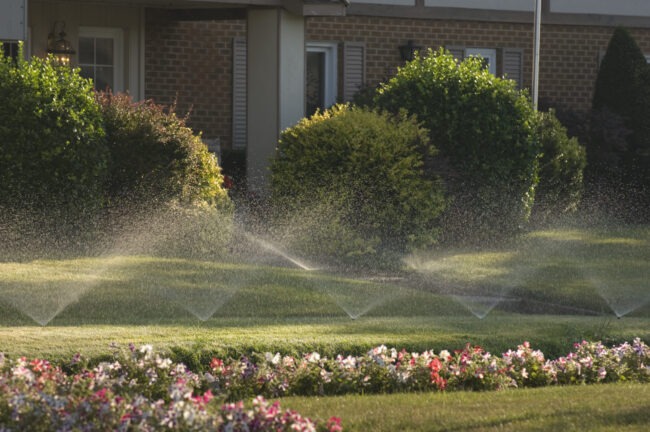
Summertime is peak growing season, and as such, the need for seasonal estate landscape maintenance is needed now more than ever. Your watering habits make all the difference, as frequent shallow watering can weaken your plants, while deep and infrequent watering encourages strong root development and improves drought resistance. Watering your landscape in the early morning reduces evaporation and can prevent fungal diseases caused by excess evening moisture.
Fall Preparation
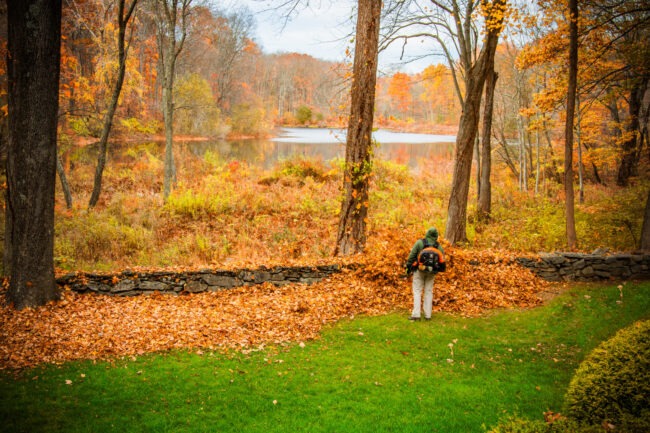
As autumn leaves begin to fall, your estate enters a period of transition before winter. Without proper management, fallen leaves trap in moisture and suffocate your turf, which can lead to fungal growth. Instead of letting them accumulate, compost leaves into a nutrient-rich material that can be used in your gardens come summer.
Fertilizing in fall supports deep root growth at a time when grass shifts energy underground, which leads to a stronger and more healthy lawn come spring. This is also the ideal season for planting your spring bulbs that will set the stage for early blooms come spring. Pruning your landscape again in the fall and disposing of weak and damaged branches is important to protect the structural beauty of your trees and shrubs come winter, as ice accumulation could cause them to break off.
Winter Protection

When winter hits, it’s time to shift your focus from active growth to protection and long-term planning. Vulnerable plants, like Japanese maples and prized hydrangeas, need winter protection or they will become damaged from freezing temperatures and harsh winds. Wrapping delicate shrubs, applying anti-desiccants, and installing windbreaks where necessary can help to prevent your cherished estate from damage.
Other winter hazards, like snow on overburdened and fallen tree limbs, become a tripping risk for your family and guests. Proactive estate maintenance tasks like reinforcing landscape structures and clearing pathways regularly are essential in keeping your landscape protected, as well as a safe place to enjoy during unpredictable Westchester winters. With the growing season on hold, winter is also the perfect time for you to review last year’s successes, research new and innovative techniques, or work on refining your estate care strategy for the year ahead. Estate maintenance never stops, it simply shifts.
Turn your landscape back into a thriving masterpiece. Browse our custom estate property care plans, so you can get back to enjoying a lush and meticulously cared-for property, any time of the year.
Snow & Ice Management for Large Estates in Connecticut & Westchester
With winter comes heavy snowfall, making property maintenance especially demanding. Estate-sized driveways, pathways, and outdoor amenities require more care than the average property to stay accessible and well-maintained. At Hoffman Landscapes, we offer residential snow removal services exclusively through our year-round maintenance service plans, ensuring your property is cared for in every season. We recommend creating a winter management map to designate snow storage zones away from delicate plantings and drainage systems, helping to protect your landscape throughout the colder months. We also invest in rubber-edged plows to prevent surface damage when clearing large areas, so your property stays both safe and beautiful all winter long.
Driveway & Private Road Clearing

Long gravel or asphalt driveways are prone to ice accumulation. Investing in professional snowplowing services can prevent excessive buildup, and ensures your gravel driveway is re-compacted in the spring. Applying a thin layer of sand mixed with a de-icing agent can help to improve traction on driveway slopes and bends. For gravel surfaces, raising your plow height slightly can help to avoid lifting your driveway material while clearing snow.
Hardscape Preservation

Using calcium-based deicers instead of rock salt can limit damage to your stone walkways, as well as prevents potential landscape maintenance issues caused by salt runoff into your garden beds. Applying a high-quality penetration sealant to stone surfaces in late fall for adds a protective barrier against moisture. After winter, rinsing your hardscaping elements thoroughly removes any residual chemicals that can cause long-term deterioration.
Tree Care & Maintenance
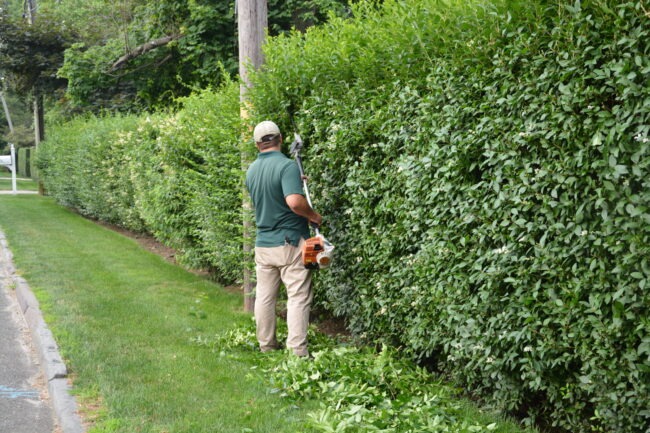
The trees on your property define the landscape, but they also require dedicated estate property care to stay healthy and structurally sound. Wind, storms, pests, and disease can all take a toll on your estate’s tree canopy, making proactive maintenance very important. Monitor for signs of stress like early leaf drop or dieback in the crown. Installing trunk guards on young trees can prevent winter sun damage and rodent destruction during colder months.
Routine Tree Assessments

Deep-Root Fertilization
Older estate trees need periodic fertilization to replenish nutrients and encourage strong root systems. For maximum effectiveness, apply fertilizer treatments in the early spring or fall when root growth is most active. Extend mulch rings to the tree’s drip line using organic materials, as they gradually break down and improve soil composition.
Preserving Estate Features & Elements
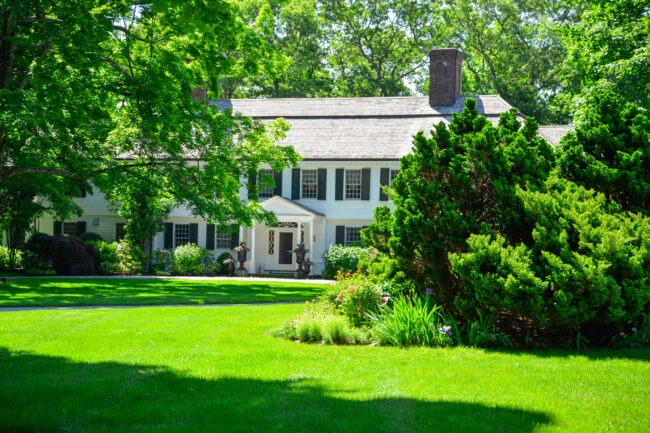
Often, the allure of an an estate property landscape is its decorative features. Flower planters, sculptural fountains, and decorative garden walls are all excellent enhancements, but without regular upkeep, these elements can quickly lose their charm. Develop a seasonal maintenance calendar that tracks when each of your features will need attention, including tasks like winterizing fountains and repairing trellises. Take pictures of your decorative elements annually to document their condition helps to identify early signs of deterioration and limit the need for any major restorations.
Stone & Metal Garden Structures
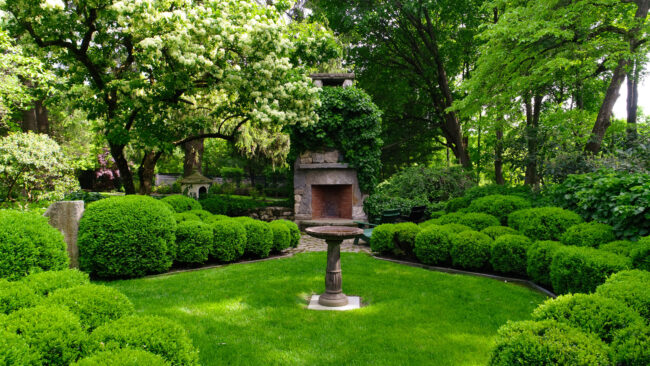
Estate properties in both regions of Connecticut and Westchester are repeatedly affected by fluctuating temperatures. Your seasonal estate landscape maintenance plan should include tasks like sealing porous stone materials, cleaning fountains and statues, or any decorative stonework regularly limits algae buildup, mineral deposits, and weathering. Use gentle, pH-balanced cleaners that are specifically formulated for use on natural stone to avoid etching or discoloration. Installing drainage improvements around foundation-based structures on your property help to prevent frost and water damage during inevitable freeze-thaw cycles.
Flower Planters & Raised Beds

Annual plant rotation of your planters and raised garden beds contributes to continuous blooming, while drip irrigation systems regulate their moisture levels without overwatering. Be sure to refresh your soil each season maintains nutrient levels. Use self-watering reservoirs helps keep moisture consistent during hot summer periods. Group your planters together based on similar water and light requirements to simplify your maintenance process and create more impactful visual displays around your property.
Vine-Covered Trellises & Arbors
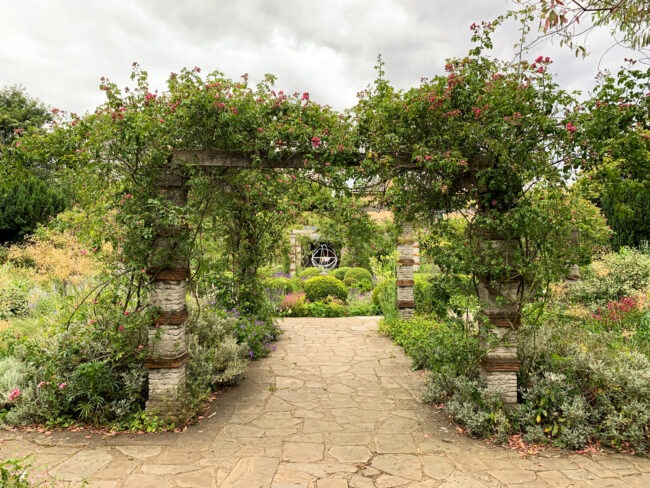
Maintaining Estate Recreational Spaces

If your estate has features like a private tennis court, a playground, or any kind of multi-sport recreation area, they require certain routine maintenance tasks to keep them safe and functional for your family and guests. Following a monthly inspection checklist for your recreational areas helps streamline your maintenance routine, and helps to catch minor issues before they become costly repairs. Apply anti-microbial treatments to any high-touch surfaces like handrails and equipment handles to improve hygiene and extend the life of these frequently used features.
Tennis & Basketball Courts
Your hard courts can develop surface cracks, moss buildup, and fading boundary lines over time. Annual resurfacing helps to extend their lifespan, while seasonal estate landscape maintenance includes cleaning, removing debris, and checking for surface drainage problems. Installing leaf guards over nearby drainage systems prevents clogs that can lead to standing water and damage. In winter months, avoid using salt-based deicers near your outdoor courts, as these can penetrate their surface and cause premature deterioration.
Playgrounds
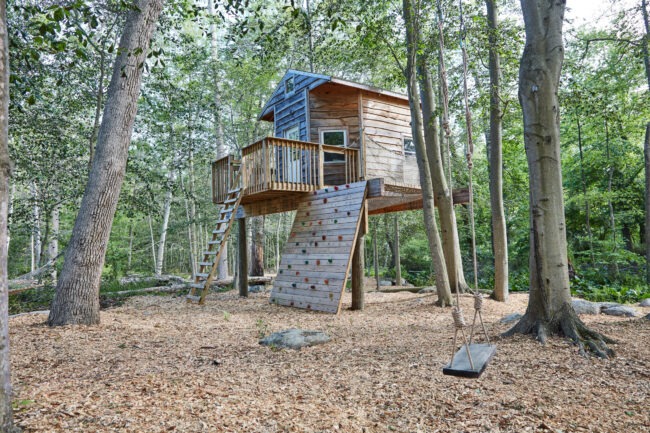
Your play structures require routine safety checks, sealing, and refinishing to limit splinters, rust, and wearing from varying climate changes. Check fasteners and connection points on your play structures on a monthly basis, because these are typically the first areas you will see signs of failure. Applying a UV-resistant coating to the plastic components will prevent sun damage or fading, and significantly extends their lifespan.
Private Golf Greens & Sports Fields

Regular aeration, fertilization, and mowing keeps your estate’s private putting green in top condition. Be sure to monitor your turf health so it can withstand heavy foot traffic. Rotate any high-use areas like soccer goals or batting practice spots to prevent excessive wear in one location. Install moisture sensors to optimize irrigation schedules based on actual soil conditions rather than preset timers, saving water while improving turf quality.
Luxury Pool Maintenance in Connecticut & Westchester

If your estate property has a pool, it’s likely one of its biggest attractions. However, without a proper strategy it can quickly become your most demanding maintenance responsibility. Year-round estate property care in this area includes specialized maintenance tasks to keep your pool, hot tub, and custom water features in top condition, allowing you to enjoy them even longer. Testing water chemistry twice weekly during heavy use periods to maintain proper balance, reducing the need for shock treatments. Installing an automatic pool cover limits leaves and other debris, minimizes chemical evaporation, and improves safety when your pool is not in use.
Filtration & Circulation Systems
Check your pool filters and pumps regularly to prevent buildup that can lead to costly repairs. Smart filtration systems can optimize your water quality while reducing chemical use. It’s best to backwash sand filters when pressure rises 8-10 PSI above the clean starting pressure for optimal efficiency. Keeping detailed logs of your filter cleanings and replacements helps you establish patterns and anticipate when components will need attention.
Seasonal Pool Opening & Closing
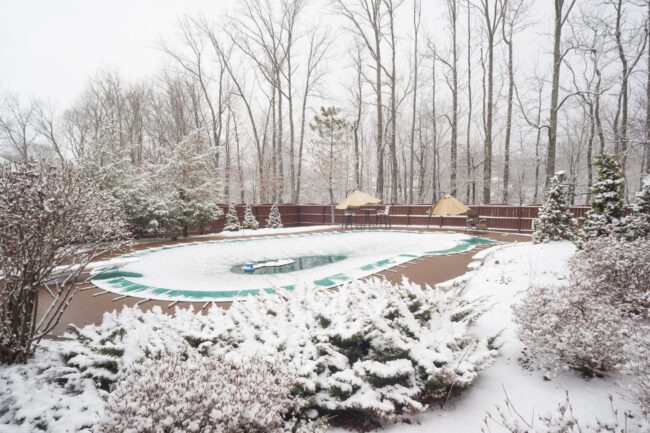
Proper winterization protects your pool from freezing damage, and conducting a thorough opening process in spring makes for clear water and balanced chemical use. Before closing your pool for the winter, consider taking detailed photos of the plumbing configurations to reference when opening it again in the spring. Adding enzyme treatments during the closing process breaks down non-living organic contaminants when your pool is covered, which means you’ll have clearer water when reopening.
Fountain & Waterfall Maintenance

Fire Feature Maintenance & Protection

Firepits and outdoor fireplaces add warmth, atmosphere, and a touch of luxury to your estate—but they do need regular upkeep to stay safe and looking their best. Over time, ash and soot can build up, gas lines may need inspection for leaks, and burners or ignition systems should be cleaned to ensure everything functions smoothly. If your fire feature includes a chimney or vent, it’s also important to check for blockages or debris that could affect airflow.
Installing proper lighting around your fire features also prevents tripping hazards after dark while transforming them into stunning nighttime focal points when you’re entertaining guests.
Stone & Masonry Fire Features

Firepits constructed from natural stone or brick need annual inspections to check for cracks that can compromise structure and heat resistance. Following cold winter months, it is wife to check mortar joints for signs of spalling or deterioration as these can allow moisture inside. Placing a quality cover over your fire feature when not in use can protect it from the relentless cycle of rainwater infiltration and evaporation, which can significantly lessen the life of your structure.
Gas Firepits & Custom Fire Features

Your gas-powered fire features should be inspected for proper ventilation and burner functionality to ensure safe and efficient operation. However, the convenience of having instant flames comes with responsibilities like making sure you are checking connections and hoses for any signs of wearing or cracking, preferably at the beginning of each season. Professional pressure testing every other year can identify any sneaky minor leaks before they become dangerous, especially once your system reaches five years old as this is when the components begin to show their age.
Surrounding Landscape Protection

Vegetable Gardens & Homesteading in Connecticut & Westchester
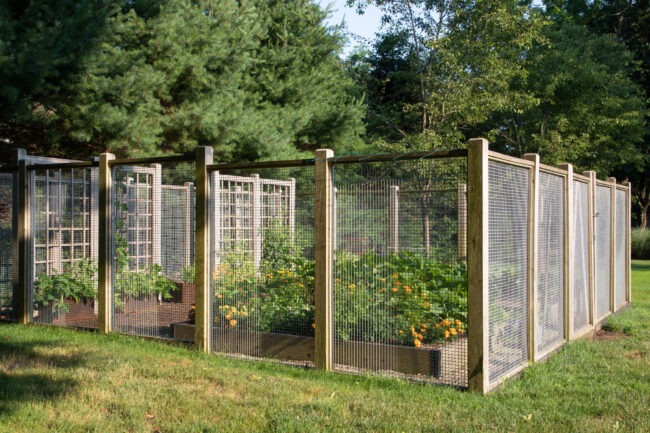
There is a great sense of pride that comes with curating and caring for your vegetable garden, as these living pantries provide your family with an unmatched farm-to-table freshness when compared to grocery store produce. Beyond the satisfaction of harvesting your own produce, homestead spaces connect you to the rhythms of the seasons and create wonderful teaching opportunities for younger family members and guests. To keep them healthy and bountiful, it’s wise to establish dedicated “garden days” for yourself twice monthly. This timing helps to limit maintenance backlogs and makes your garden work less of a chore and more of an anticipated ritual.
Soil Enrichment & Crop Rotation
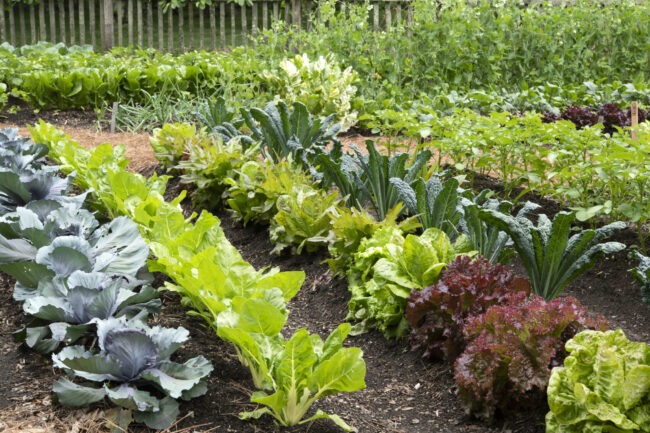
Testing your soil for pH balance and nutrient levels helps you understand and adjust your use of compost or organic fertilizers. Rotating your crops each season prevents soil depletion, discourages pests, and breaks problematic lifecycle patterns that can plague single-crop areas. Introducing beneficial nematodes (tiny worms that seek out and eliminate garden pests) and soil microbes (helpful bacteria and fungi that support healthy plant growth) in early spring can naturally suppress harmful organisms without the use of harsh chemicals, thus creating a thriving underground ecosystem tirelessly working to your benefit. The rich, crumbly soil you’ll develop becomes your garden’s greatest asset, which you can then improve upon each passing season.
Seasonal Garden Transitions

Spring and fall are important seasons for preparing your vegetable beds, pruning fruit trees, and protecting perennials before extreme temperatures set in, as these transition periods often determine the success of your entire growing season. Installing frost blankets and portable cold frames can extend your growing season by as much as 6-8 weeks, giving you fresh greens for longer while your neighbors are shopping at the supermarket. Succession planting techniques maximize your harvest window by encouraging continuous production throughout your growing season and prevent feast-or-famine cycles that are common in less-managed gardens.
Irrigation & Drainage Management
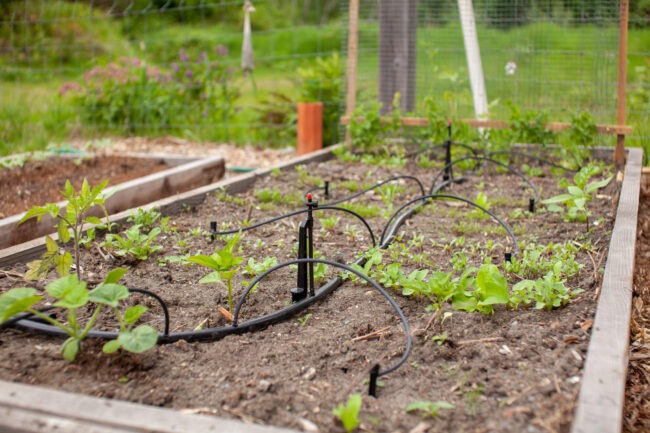
Wildlife Balance & Tick Control in Connecticut & Westchester
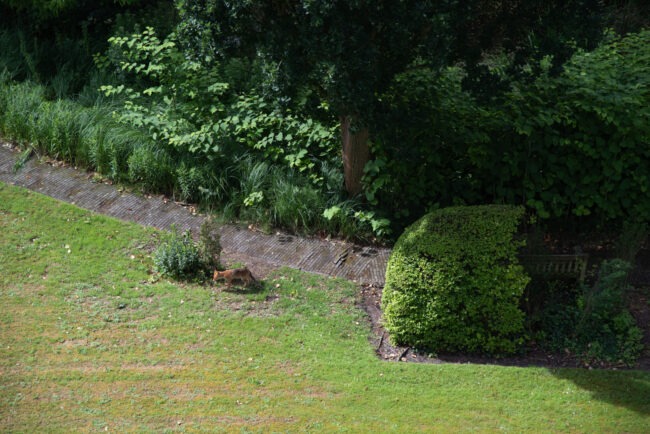
Large estates naturally attract wildlife like deer, birds, and small mammals that can either enhance or disrupt your landscape. Proper estate property care involves preserving the natural beauty of your land and needs a strategic approach to prevent overgrazing, plant damage, and property interference from pesky visitors. In areas with high deer populations, choosing plants like deer-resistant perennials, ornamental grasses, or aromatic herbs helps to limit damage to your landscape by imposing wildlife. Tick control measures like clearing underbrush and installing gravel barriers can help keep tick populations low without disrupting the surrounding ecosystem. If your estate property has waterfront access or ponds, consider working with property maintenance professionals to achieve the right balance of native plants and controlled vegetation to prevent erosion while supporting local wildlife.
How to Choose the Right Landscaping Firm

When investing in high-end outdoor living, selecting the right landscaping firm is essential. With over 35 years of experience designing and maintaining luxury landscapes across Connecticut and Westchester, Hoffman Landscapes is known for delivering thoughtful design, trusted craftsmanship, and exceptional service. Here’s what to look for and why Hoffman Landscape is the best choice.
Look for a Proven Portfolio
When choosing a landscape company, it’s important to review their past work to get a true sense of their range, style, and craftsmanship. At Hoffman Landscapes, we’re proud to showcase award-winning designs that span everything from elegant estate gardens and inviting outdoor kitchens to stunning pools and complete property transformations. Our portfolio reflects a deep understanding of both traditional charm and contemporary sophistication, allowing us to tailor each project to your unique vision. With a proven track record of excellence and a passion for creating inspiring outdoor spaces, Hoffman Landscapes is the right choice to bring your dream landscape to life.
Expect a Full-Service Approach
The right landscape firm should be equipped to handle every phase of your project—design, construction, and ongoing maintenance. At Hoffman Landscapes, we offer fully integrated in-house design/build teams along with year-round property care, providing you with a seamless experience from concept to completion. This unified approach ensures consistency, clear communication, and exceptional results at every stage, giving you confidence that your outdoor space will be expertly crafted and beautifully maintained for years to come.
Ask About Design Expertise
Your property deserves more than cookie-cutter solutions. At Hoffman Landscapes, our team of licensed landscape architects creates custom plans designed specifically around your home, lifestyle, and architecture. Every element is thoughtfully considered to ensure long-term function, beauty, and harmony, resulting in an outdoor space that feels uniquely yours and stands the test of time.
Prioritize Communication & Transparency
A reliable landscape firm communicates clearly and consistently throughout every stage of your project. At Hoffman Landscapes, our clients receive detailed project timelines, transparent cost estimates, and regular updates to keep everything on track. With access to our convenient client portal, staying informed is easy, giving you peace of mind and confidence as your outdoor space comes to life.
Choose Long-Term Value
Landscaping is an investment, and it’s important to think beyond just the initial installation. At Hoffman Landscapes, we stand behind our work with comprehensive maintenance services and seasonal enhancements designed to keep your property looking its best year-round. Our commitment doesn’t end when the project is complete—we’re here to ensure your landscape continues to thrive and grow for years to come.
Consider Credentials & Recognition
Reputation is earned, not claimed. At Hoffman Landscapes, we are proud to be a multi-award-winning firm and an active member of the National Association of Landscape Professionals, reflecting our dedication to excellence in every project we undertake. With decades of local expertise, we understand the unique conditions and characteristics of properties throughout Connecticut and Westchester. This deep-rooted knowledge, combined with our commitment to quality and service, makes Hoffman Landscapes the trusted choice for transforming your outdoor space into something truly exceptional.
Legacy Meets Landscape

Your estate is so much more than the land you live on, it’s your legacy. Treating your landscape like the living work of art that it is will revive what has been lost and, in time, evolve into a place you’ll be proud to call yours. If you find yourself short on time or specialized expertise, remember that partnering with a professional estate property care service is one sure fire way to bring out the best in every acre of your little slice of heaven in Connecticut & Westchester.
At Hoffman Landscapes, estate care isn’t just a service, it’s our craft. With decades of expertise in estate property restoration, precision maintenance, and custom landscape design, we preserve and enhance the beauty of the region’s most distinguished properties. Our specialists understand the nuances of expansive estates, and treat every property like our own with every detail meticulously cared for. Experience the Hoffman difference and your landscape’s true potential is finally realized. Connect with our estate specialists today and take the first step toward a property that exceeds even your most ambitious dreams.


